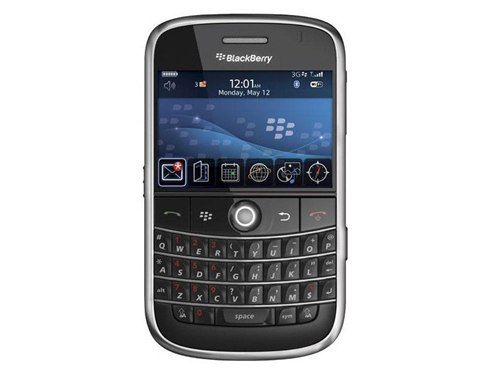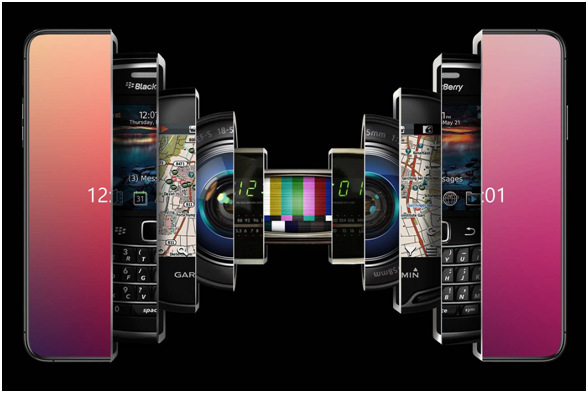This company was famous for its mobile phones… but why did it stop selling them? [Tuesdays: Return Driven Strategy]

Miles Everson’s Business Builder Daily speaks to the heart of what great marketers, business leaders, and other professionals need to succeed in advertising, communications, managing their investments, career strategy, and more.
A Note from Miles Everson:
Have you ever wondered how you and your business can create and maximize wealth?
If your answer is “yes,” this framework will help you a lot: Return Driven Strategy (RDS)!
RDS has 11 tenets and 3 foundations. When properly integrated into your business strategy, these principles will help you achieve true wealth and value creation.
Today, let’s look at a case study related to the second tenet of RDS: Fulfill Otherwise Unmet Customer Needs.
Continue reading to know why fulfilling the unmet needs of your customers is an important aspect of business strategy and operations.
Miles Everson
CEO, MBO Partners
Chairman of the Advisory Board, The I Institute
Return Driven Strategy
Back in the early 2000s, sending emails was one of the fastest and relatively inexpensive ways to send messages across the globe. However, this also had a downside.
Although emailing was a good way to communicate globally, it wasn’t the most convenient. Back then, a person needed to use a personal computer (PC) to send and receive emails.
Unfortunately, not everyone had access to a PC. Emailing couldn’t be done through a handheld device either.
Thankfully, one company saw this as an otherwise unmet need that had to be fulfilled, and as a result, the firm made a name for itself as one of the most innovative mobile phone companies during its peak.
The name of this company?
BlackBerry Limited!

Photo courtesy of BlackBerry
BlackBerry Limited, formerly known as Research In Motion (RIM), was founded in 1984 by engineers Mike Lazaridis and Douglas Fregin.
The firm made waves in 1996 with its release of the Inter@ctive 900 Pager, a two-way pager that could send faxes and emails, and connect to the Internet. Subsequent models of this device added color display and instant messaging.
In 1999, the company also entered the business of manufacturing mobile phones. The first mobile phone BlackBerry Limited released?
The BlackBerry 957.

Photo courtesy of Youtube
BlackBerry mobile phones and its subsequent iterations were known for having a small screen, physical keyboard, and trackball. The keyboard on these devices were praised for making typing a lot easier. The trackball made menu navigation effortless as well.

Photo courtesy of iFixit
These devices gave users the ability to browse the Internet, and read and write emails without sitting in front of a desktop computer. Additionally, these phones came with BlackBerry Messenger (BBM)—a proprietary messaging application unique to BlackBerry users. Messages sent through the app were heavily encrypted. Because of this feature, BBM was considered a secure messaging service.
In the early to mid-2000s, BlackBerry mobile phones became popular among those who worked for enterprises and governments. As a result, the company earned millions of dollars in the contracts it signed with these agencies.
BlackBerry also gained a HUGE following! Notable individuals like Justin Timberlake, Kim Kardashian, Cristiano Ronaldo, and former U.S. President Barack Obama were known for being devoted followers of the mobile phone brand.
Many people thought the company was primed for long-term success in the mobile phone market. At its peak, the company earned almost USD 20 billion in revenues.
Unfortunately, BlackBerry’s success didn’t last long.
From a peak revenue of almost USD 20 billion in 2011, the company’s earnings plummeted to USD 2 billion in 2016.
What caused this massive decline?
To put it simply, BlackBerry wasn’t able to adapt to the changes that occurred in the mobile phone industry during the late-2000s and early to mid-2010s.

Photo courtesy of the Wall Street Journal
Here are some of the technological developments that occurred during that time:
- Apple Inc.’s iPhone drastically changed the way mobile phones were designed. Small screens were replaced with big displays, and to make this possible, physical keyboards were removed. Back-facing and front-facing cameras were also added. Samsung Electronics, LG Electronics, Sony Corporation, and other mobile phone manufacturers adopted this design scheme to great success as well.
- Aside from hardware developments, software innovations occurred. Apple’s iOS (the iPhone’s operating system) and Google’s Android (the operating system used by other phone manufacturers) gave users access to various applications.
These hardware and software innovations altered consumer preferences. In 2014, iOS and Android devices occupied almost 70% of the global mobile phone market.
So… how did BlackBerry respond to these developments?
Despite the prevalence of iOS and Android devices, BlackBerry kept on releasing keyboard-equipped and touchscreen devices that only a small segment of users wanted. In 2014, the company’s global market share was below 4%.
Recognizing that something had to change, BlackBerry decided to manufacture Android devices in 2015. The following year, the firm signed an agreement with electronics firm TCL Corporation. Under this partnership, TCL manufactured mobile phones for BlackBerry.
Unfortunately, these moves were too late. By the end of 2018, the firm occupied only 0.1% of the global mobile phone market. Moreover, the firm made less than USD 1 billion in revenue. As a result, BlackBerry’s management team no longer pursued this market segment and decided to focus simply on selling cybersecurity software to enterprises and governments.
—
The decline of BlackBerry’s mobile phone business wasn’t caused by competitors and other external factors, but by an inability to consistently fulfill its customer needs—Tenet 2 of Return Driven Strategy (RDS).
As what Professor Joel Litman and Dr. Mark L. Frigo said in the book, “Driven.”
“Weaker-than-desired performance does not stem from some outside competitive force; it comes directly from an inability to fulfill customer needs.”
Markets evolve constantly. This means if a firm wants to thrive in an ever-changing business landscape, it must constantly rethink its approaches to effectively fulfill customers’ unmet needs. Failure to do so will lead to poor financial returns.
What can you and your business learn from BlackBerry’s downfall in the mobile phone industry?
- Always be on the lookout for product offerings that have the potential to significantly impact consumption behavior.
- Discontinue offerings that no longer fulfill unmet needs.
- Product innovation should be driven by customers’ unmet needs. Innovation for innovation’s sake is a waste of resources.
- Study the offerings of rival firms. Understanding what others are doing right will help you refine subsequent iterations of your offerings.
- Identify market trends and adapt your business strategy accordingly.
Remember: A company that retains and expands its consumer base sets itself up for years of success.
Keep these simple yet powerful principles in mind when crafting your business strategy and creating your offerings.
We hope you learned a lot from today’s case study!
(This article is from The Business Builder Daily, a newsletter by The I Institute in collaboration with MBO Partners.)
About The Dynamic Marketing Communiqué’s
“Tuesdays: Return Driven Strategy”
In the book, “Driven,” authors Professor Joel Litman and Dr. Mark L. Frigo said that the goal of every long-term successful business strategy should incorporate the combined necessity of “making the world a better place” and “getting wealthy.”
That is why they created Return Driven Strategy and Career Driven Strategy―frameworks that were built to help leaders and professionals plan and evaluate businesses so they can also help others achieve their organizational goals and career goals.
The frameworks describe the plans and actions that drive returns for anyone in an organization such as independent contractors, marketers, brand managers, communicators, and other people in any field. These actions lead to the creation of wealth and value for customers, employees, shareholders, and the society.
Every Tuesday, we’ll highlight case studies, business strategies, tips, and insights related to Return Driven Strategy and Career Driven Strategy.
In planning, building, or managing brands and businesses, these strategies, case studies, and guidelines will help you choose what specific actions to take and when to take them.
Hope you found this week’s insights interesting and helpful.
Stay tuned for next Tuesday’s “Return Driven Strategy!”
Cheers,
Kyle Yu
Head of Marketing
Valens Dynamic Marketing Capabilities
Powered by Valens Research
www.valens-research.com




